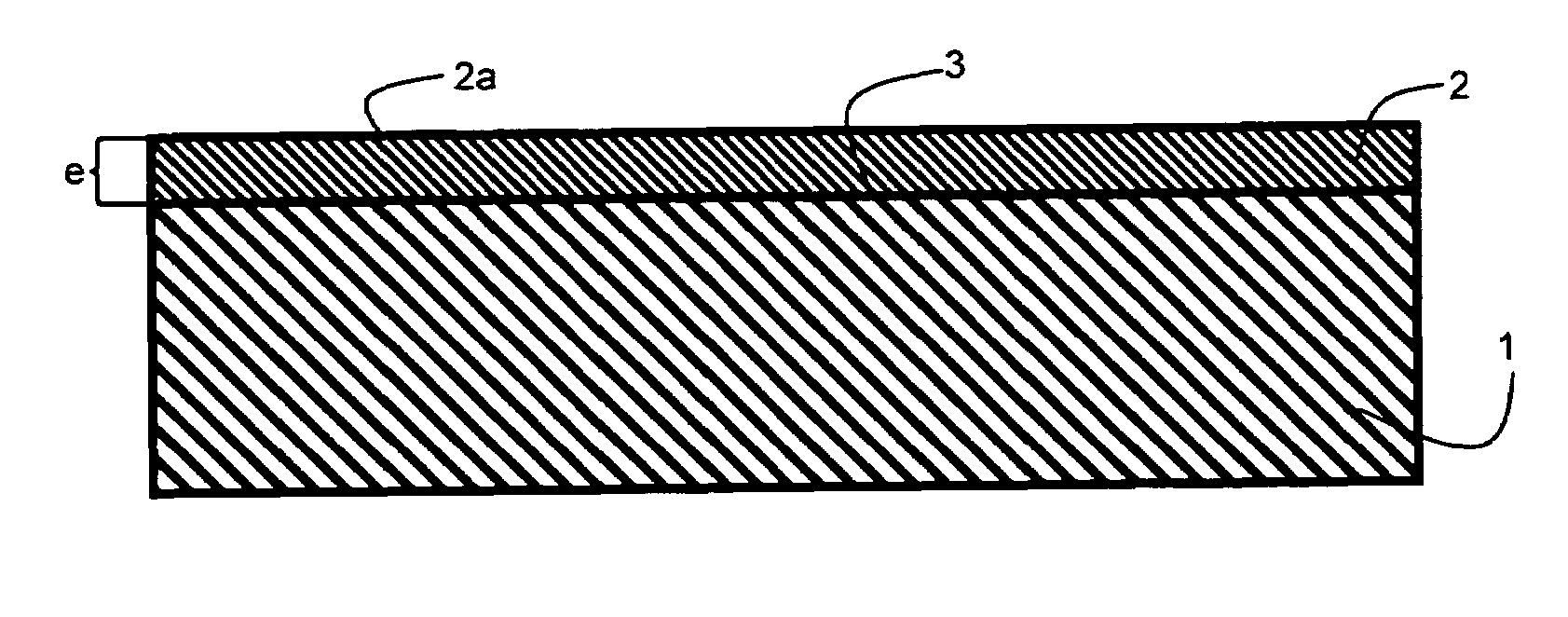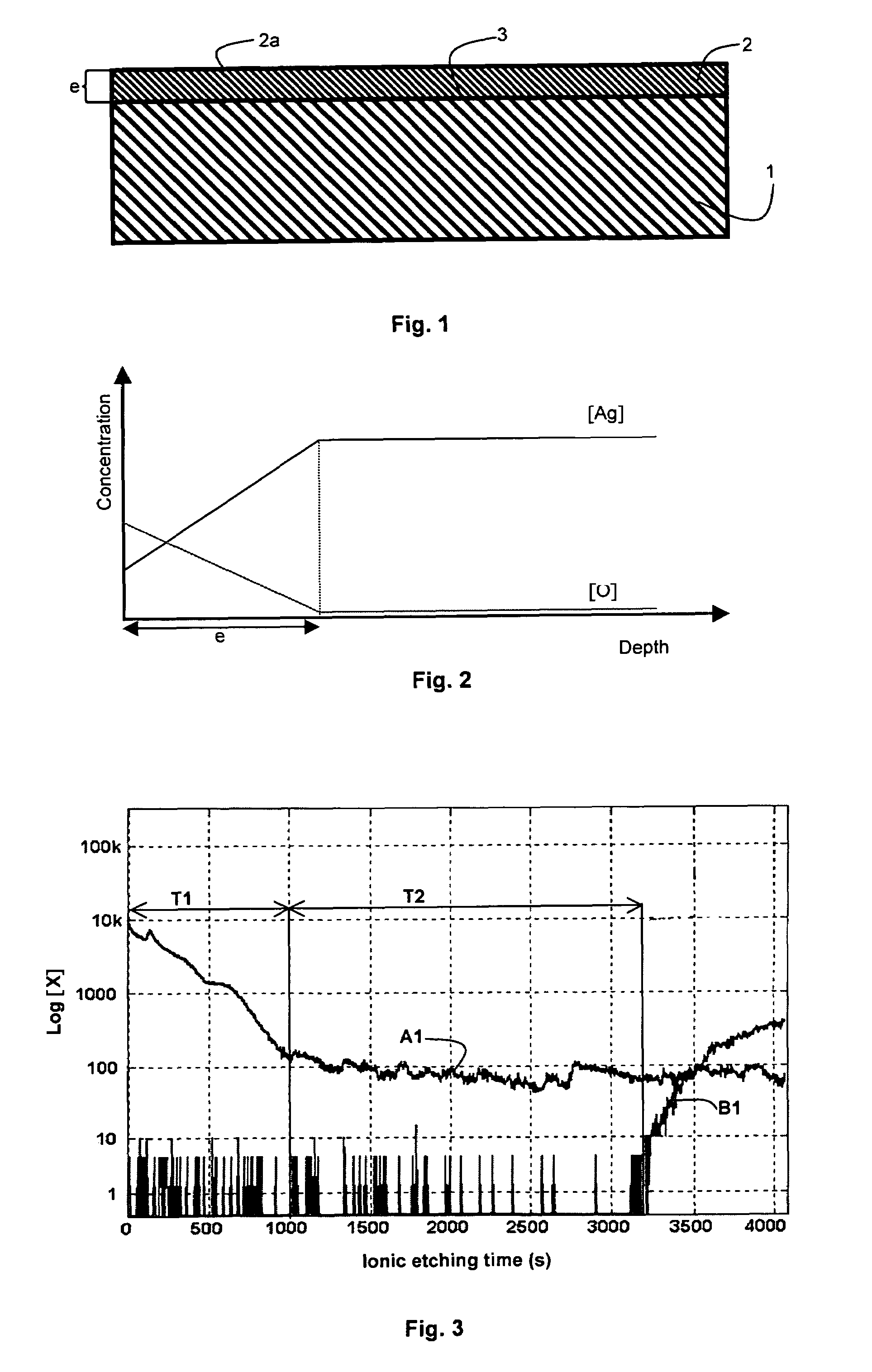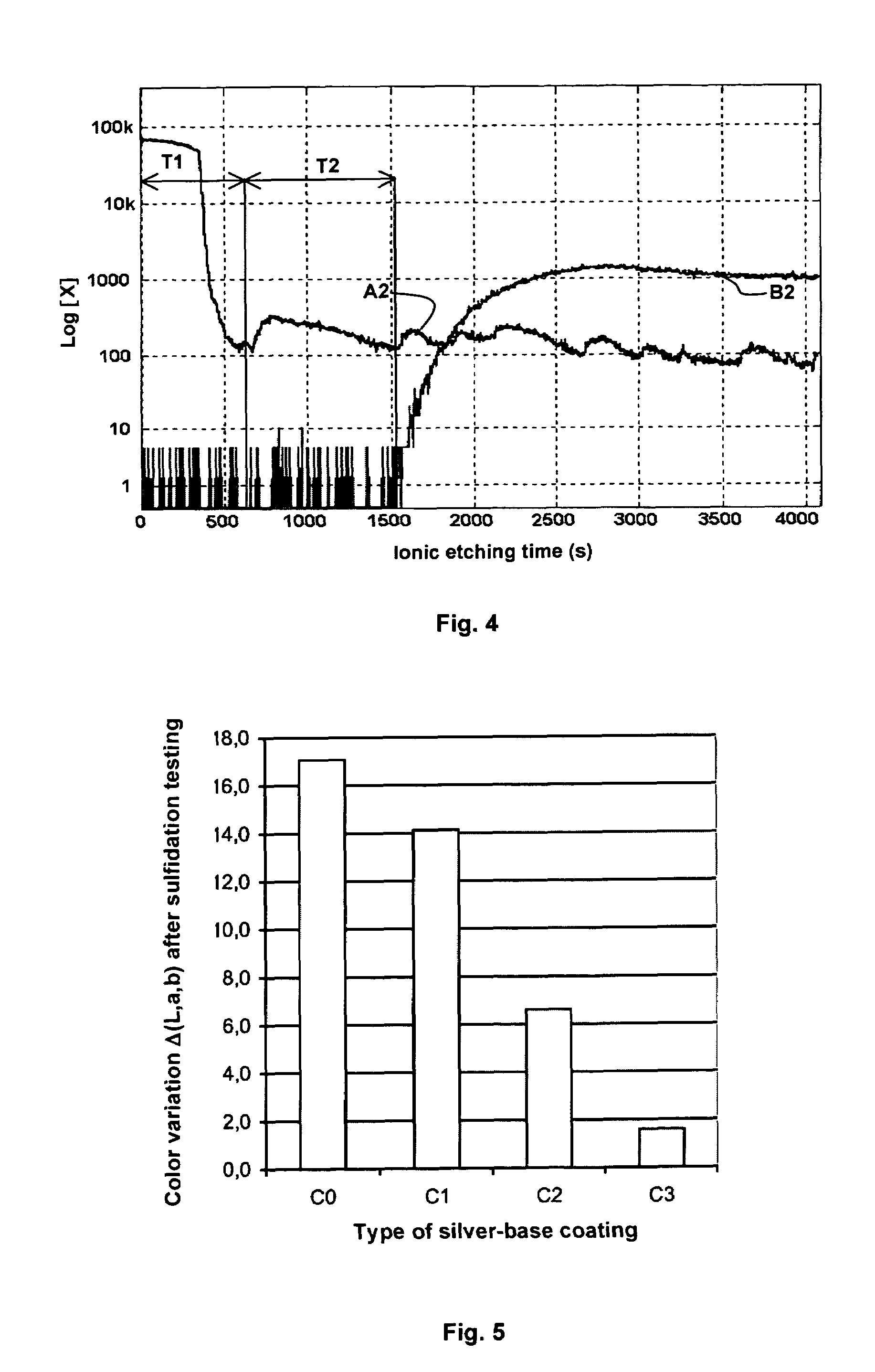Sulfidation-resistant silver-base coating, method for depositing such a coating and use thereof
a silver-base coating and sulfidation-resistant technology, applied in the direction of ion implantation coating, chemical vapor deposition coating, coatings, etc., can solve the problems of increasing the contact electrical resistance of the silver-base material, known to tarnish, and lustreless surface of the silver-base object, so as to improve the sulfidation resistance
- Summary
- Abstract
- Description
- Claims
- Application Information
AI Technical Summary
Benefits of technology
Problems solved by technology
Method used
Image
Examples
Embodiment Construction
[0023]The sulfidation resistance of a silver-base material coating is further improved by achieving, from the free surface of the coating up to a depth comprised between 10 nm and 1 μm and more particularly between 100 nm and 1 μm, a concentration gradient of silver, oxygen and possibly one or more oxidizable alloying elements (or solutes) which may be present in the material.
[0024]What is meant by concentration gradient of a chemical element is a continuous variation of the concentration of this said chemical element from the free surface up to a depth comprised between 10 nm and 1 μm.
[0025]Thus, as represented in FIG. 1, a coating of silver-base material according to the invention comprises a stack of a main layer 1 and an oxidized thin film 2.
[0026]The main layer 1 can be a thin layer of silver or of a silver-base alloy. More particularly, the main layer 1 is formed by an alloy comprising, in addition to silver, at least one oxidizable metallic alloying element. The choice of the...
PUM
| Property | Measurement | Unit |
|---|---|---|
| thickness | aaaaa | aaaaa |
| thickness | aaaaa | aaaaa |
| thickness | aaaaa | aaaaa |
Abstract
Description
Claims
Application Information
 Login to View More
Login to View More - R&D
- Intellectual Property
- Life Sciences
- Materials
- Tech Scout
- Unparalleled Data Quality
- Higher Quality Content
- 60% Fewer Hallucinations
Browse by: Latest US Patents, China's latest patents, Technical Efficacy Thesaurus, Application Domain, Technology Topic, Popular Technical Reports.
© 2025 PatSnap. All rights reserved.Legal|Privacy policy|Modern Slavery Act Transparency Statement|Sitemap|About US| Contact US: help@patsnap.com



